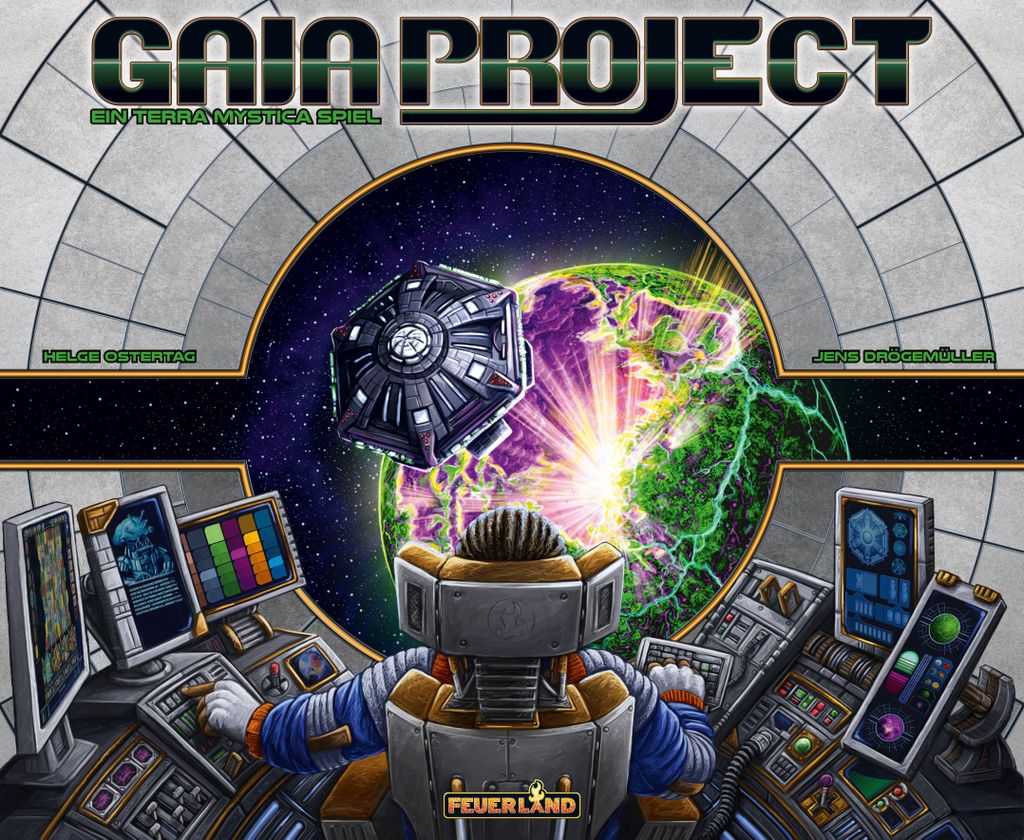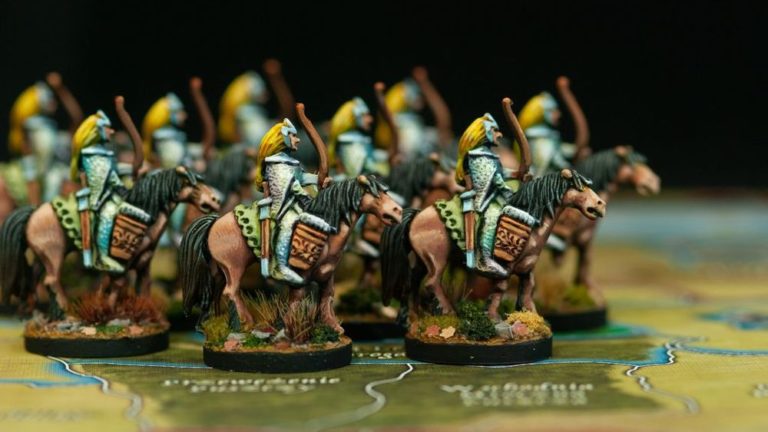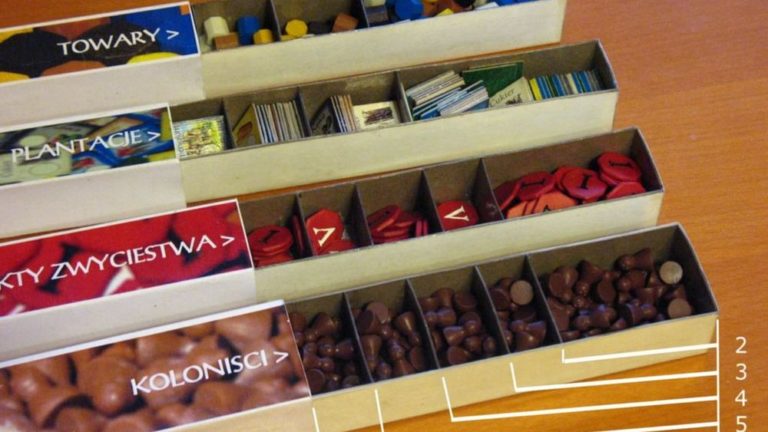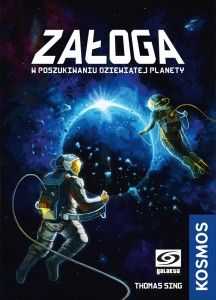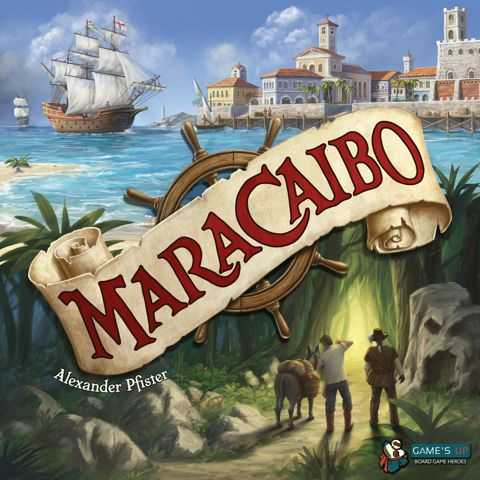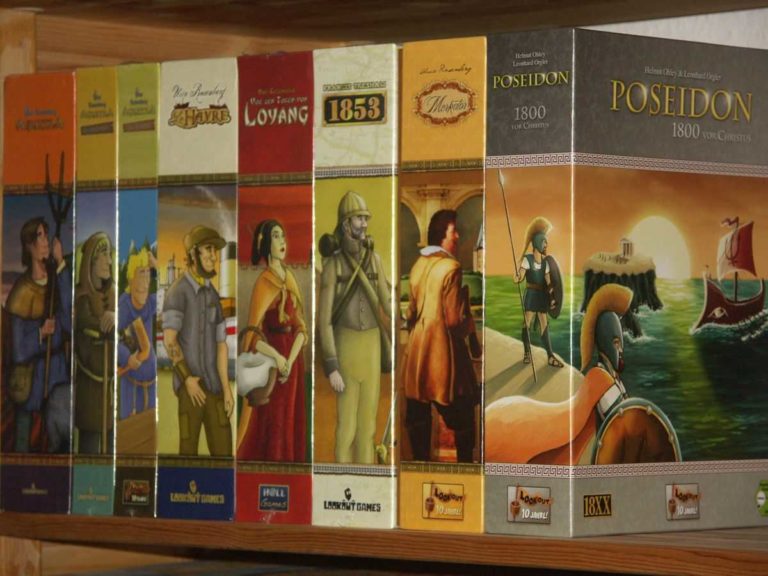Immersive Gaia Project Review
Immersive Gaia Project Review
Hey there, friend! Have you heard of Gaia Project? Oh, wait until I tell you about this deep dive into galactic colonization that I’ve been absolutely engrossed in lately. Imagine a universe where your strategic prowess is put to the test, crafting an interstellar empire. Gaia Project is the kind of game that demands your full attention; it’s like the intricate dance of chess meets the vibrant brushstrokes of an artist. And let me assure you, it’s as challenging as it is rewarding, a rich tableau of resource management, strategic planning, and spectacular theming that will leave you pondering over your coffee the next morning.
Key Points:
- Gaia Project is a deep, strategic game of galactic colonization.
- It offers a rich tableau of resource management, strategic planning, and immersive theming.
- The game features asymmetric factions, a modular board, and diverse technologies for a unique experience each time.
- The transition from Terra Mystica to Gaia Project is like a natural evolution to a cosmic spectacle.
- Core mechanics include resource management, power cycle, building and upgrading structures, and the intricacies of the research board.
- The game offers a balance of multiplayer dynamics and a robust solo mode with the Automa system.
- Gaia Project stands out for its complex but rewarding gameplay, immersive aesthetics, and deep theme.
I’ve journeyed through the universe of Terra Mystica, awed by the diverse landscapes and mystical beings. But there’s something about Gaia Project that feels like a quantum leap into the stars, a natural evolution where the possibilities stretch out like the endless expanse of space itself. Picture this: alien species, advanced technologies, and dynamic game boards that promise a unique experience each time you play.
In this immersive Gaia Project review, prepare to embark on an odyssey of monumental proportions. From the refined mechanics to the aesthetic wonders that adorn your tabletop, we’ll explore every corner of this masterful creation. For newcomers and seasoned players alike, I’ll break down the intricate details and share personal experiences that have made every session a memorable adventure. Grab your favorite drink, settle in, and let’s launch into the spellbinding universe of Gaia Project together.
Diving into the Universe of Gaia Project
Strap in, because we’re about to embark on a journey that’s nothing short of stellar. Gaia Project isn’t just a game; it’s a portal to a vivid universe sketched with such finesse that it’ll leave you in awe with every session. The richness of the gameplay and the tangible evolution from its predecessor, Terra Mystica, bring an allure that’s hard to resist. And I’ll be your guide, navigating through this cosmos, sharing the marvels and intricacies of a game that’s become a venerated staple in my collection.
Overview of Gaia Project
In the heart of Gaia Project lies a galactic conquest where you command one of fourteen unique factions, each with their own special abilities and pathways to the stars. The game unfurls on a modular board, composed of hexagonal sectors that ensure no two games are ever the same. Players colonize planets, upgrade structures, and research technologies to expand their empires. The aim? It’s no small feat. You’re orchestrating a symphony of strategic moves to gain dominance in the galaxy, balancing expansion with resource management to outmaneuver your opponents.
This game is a banquet for those with an appetite for tactical depth; a solo experience also awaits the solitary explorer, challenging and as engrossing as the multiplayer fray. I’ve spent countless hours navigating this universe, and I’m here to share those insights, the remarkable moments that Gaia Project offers, and why this might just be the supermassive black hole of your board gaming galaxy – an all-consuming force of fun and cerebral challenge.
Gaia Project offers a galactic conquest experience with unique factions, modular board, and strategic gameplay, providing a rich and challenging experience for both solo and multiplayer play.
The Evolution from Terra Mystica to Space
The jump from the mystical realms of Terra Mystica to the cosmic spectacle of Gaia Project is akin to a ship achieving luminal speed. Gaia Project took the foundational brilliance of Terra Mystica and infused it with a sense of freedom and exploration that only space can offer. The static board of Terra Mystica, while rich in its elegance, gives way to a kaleidoscopic array of star systems in Gaia Project, each game offering new cosmic seas to chart and conquer.
For those familiar with Terra Mystica, the transition to Gaia Project isn’t a jarring one. It’s like discovering a new layer to a favorite song – the core rhythms remain, but the harmonies are richer, with a crescendo that soars to new strategic heights. The asymmetric factions and the varied board breathe life into the tactics and strategies of play. I’m constantly driven to revisit and refine my approach, feeling like a seasoned captain navigating uncharted territories, drawing upon the lessons from each previous voyage.
The true mastery of Gaia Project, however, lies in its ability to retain the essence of Terra Mystica while boldly reimagining its systems and mechanics. It resonates with a melody of complexity that might seem overwhelming at first but turns into a magnum opus of game design upon deeper exploration. The evolution is not simply a re-skin; it’s a testament to how thoughtful design choices can elevate a game from great to extraordinary, from memorable to unforgettable.
The Core Mechanics of Gaia Project
The true brilliance of Gaia Project shines through its core mechanics; an intricate engine that powers the game, demanding nimble strategy and a mind for optimizing resources. Understanding these mechanics is key to mastering the galaxy before you, and I’m here to decode the intricacies into simple truths that’ll guide your path to victory.
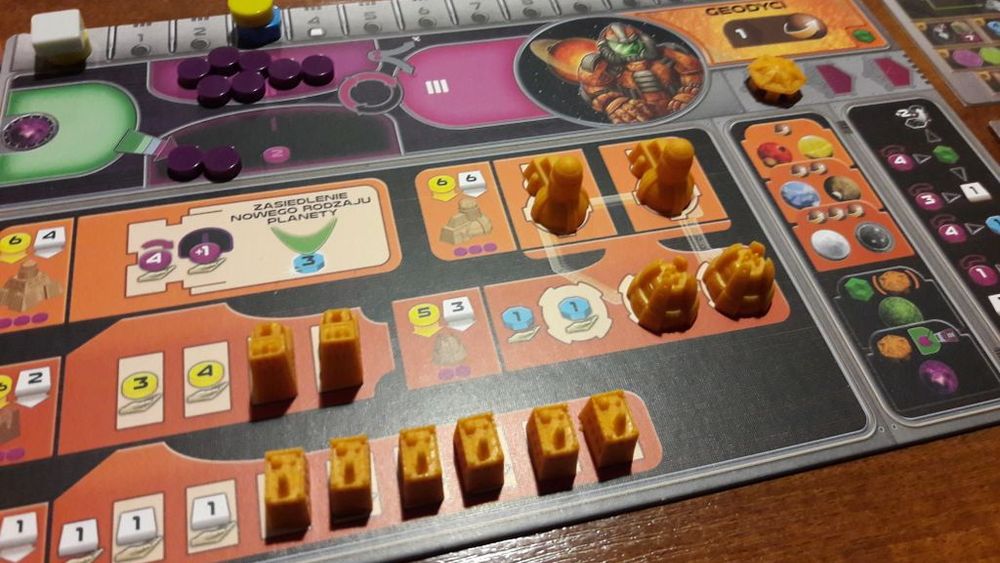
Resource Management and Power Cycle
Every seasoned space traveler knows that a successful campaign hinges on the efficient management of resources. Resources in Gaia Project form the lifeblood of your interstellar dominion, and juggling them effectively is no menial task. You’ve got ore, credits, knowledge, and Quantum Intelligence Cubes (QICs) at your disposal, each serving as a linchpin in your grand design. I can’t tell you how many times I’ve deliberated over the optimal use of my resources, often finding the path to victory in the most unexpected allocations.
Then there’s the power cycle, Gaia Project’s unique twist that transforms power into a living, cyclical economy. Imagine three bowls filled with tokens, and as your empire grows, these tokens shift between the bowls, simulating the ebb and flow of cosmic energy. The timing and conversion of this power require foresight that can be as thrilling as it is daunting. It’s like a cosmic ballet, where every step, every pirouette of power, can result in a beautiful display of strategic prowess or a miscalculated tumble into the vacuum of space.
Building and Upgrading Structures
Now, let’s talk about the foundations of your empire: structures. Building and upgrading these is like composing a symphony in space; every structure has its place, contributing to the harmony of your empire. From humble mines to advanced research labs, each edifice paves the way for greater glory. Ah, the stories I could tell you about the gambles and successes of my architectural endeavors – the carefully placed academy that clinched my victory, or the mine expansions that sprawled like stardust across sectors.
Each upgrade feels significant, a testament to your strategic vision. I’ve agonized over decisions, calculating the benefits of an upgrade against the cost, both in resources and opportunity. Should I upgrade to a trading post now, or wait one more round? It’s these crucial moments that can define your place among the stars. It’s as though each structure isn’t just a piece on the board but a living part of your civilization’s narrative, with every new building echoing the growth and ambition of your spacefaring race.
Building and upgrading structures in your empire is like composing a symphony in space, each edifice contributing to the harmony and growth of your civilization’s narrative.
The Intricacies of the Research Board
Ah, the research board – a tableau of scientific advancement. Imagine a ladder that leads to the heavens, and with each rung you climb, you unlock secrets that empower your faction in profound ways. Whether it’s learning to terraform hostile planets or developing potent gaiaforming techniques, mastery of this board is a dance of intellectual dominance.
Each track on the research board shines in its own right, extending your capacities or granting you pivotal advantages. I remember one game, I advanced on the artificial intelligence track, and it felicitous as though I’d recruited a legion of digital oracles, their insights paving the way to a resounding victory. The board also interlaces with your strategies elsewhere – the synchronization between upgrading a terraforming technology and your empire’s expansion can feel like a harmonious convergence of fate and foresight.

Moreover, there’s a competitive hustle in this scientific arena. You’re not just climbing for glory; you’re racing against rival intellects. Advancing quickly can grant you coveted federation tokens, each a badge of your faction’s prowess. In this pursuit of knowledge, each decision you make carries the weight of future turns, reminding you constantly that every move is a step toward the stars – or into the dark abyss of being outwitted.
The Gameplay Experience
Entering the gameplay experience of Gaia Project is like stepping into a controlled supernova of decision-making. Every choice radiates significance, enveloping players in an atmosphere of intrigue and multi-layered strategy.
Strategic Depth and Decision Making
The depth of strategy in Gaia Project is as vast as the cosmos itself. Here, the choices you make resonate through the ages, each one a ripple that shapes your empire’s destiny. You’re constantly weighing the benefits of expansion against the prospects of technological advancement or the instant gratification of building something monumental. And each faction’s special abilities add layers to this rich tapestry, demanding an understanding as deep as a black hole’s core.
The real appeal, though, lies in perfecting your strategy over multiple plays. It’s not just about competing against your peers, but against your own past performances, striving for a more elegant, more efficient path to victory. I’m always fascinated by the nuanced decisions, whether it’s choosing the right tech track to pursue or deciding when to leech power from a neighboring rival. It’s a cerebral game that’s as much about anticipating your opponents’ moves as it is about crafting your own strategy.
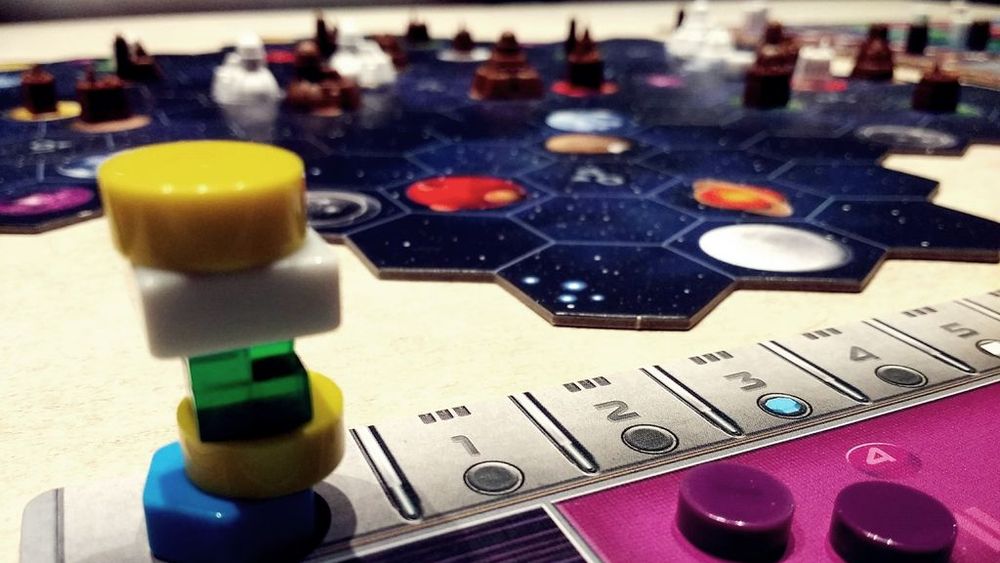
The depth of strategy in Gaia Project is vast, with choices resonating through the ages, demanding an understanding as deep as a black hole’s core.
The Balance of Multiplayer Dynamics
But it’s not just your individual strategy that counts. In Gaia Project, you’re part of a delicate multiplayer dynamic, carefully monitoring the galaxy around you. Every player’s decisions feel interconnected, like a constellation of intentions that can either align or clash. There’s this beautiful balance between cooperative symbiosis and cutthroat competition. I’ve reveled in the moments when I can ride the wave of another’s actions, and I’ve also witnessed my well-laid plans crumble due to a rival’s unpredictable maneuver.
Moreover, the game strikes a balance between feeling like a multiplayer solitaire and a shared strategy skirmish. Each player is engrossed in their cerebral ballet, yet the dance floor is common, and so is the music – the flow of power, the rise of structures, and the march of technology. I’ve forged alliances that have swung the scales in my favor, and I’ve seen the solo player’s path not just as an alternative but as a whole new strategic realm. Achieving a cohesive strategy across these dynamics is like weaving the fabric of the cosmos with the threads of your ambition – a cosmic challenge that beckons with every play.
The Aesthetics and Theme
When it comes to aesthetics and theme, Gaia Project doesn’t just build worlds; it crafts universes brimming with color, texture, and immersive depth.
Visuals and Components
The components and visuals of Gaia Project do more than merely please the eye; they envelop you in an alien elegance. Let me paint the picture for you: the modular board glows with vibrant planets and distant suns, inviting you to weave your narrative across the galaxy. And the faction boards! They’re a control panel for your empire, detailed with symbols and icons that speak the language of spacefaring civilizations.
The first time I cracked open the box, I was struck by the ornate detail of the pieces, the quality of the components from the resource tokens to the plastic structures. It feels as though you’re holding pieces of a distant future in your hands, each tactile element a testament to the game’s thoughtful design. The miniatures, for example, aren’t just tokens but representations, silhouettes of ambition that rise in three dimensions, casting shadows of influence across the sectors they dominate.
Playing Gaia Project is a visual and tactile experience, akin to orchestrating a symphony of colors and forms that some might call art. I’ve found myself simply admiring the board at times, lost in the galactic panorama that unfolds with each session. The game doesn’t just offer a visual feast; it serves a banquet where every element contributes to the immersion, the narrative, and – ultimately – the joy that comes with playing a game that’s been so carefully and beautifully crafted.
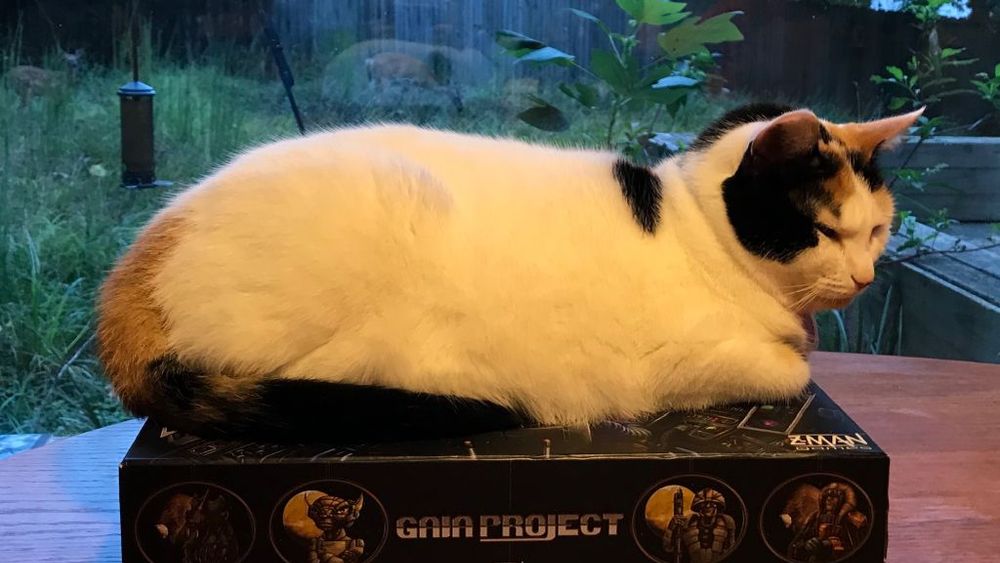
How Theme Enhances Gameplay
If space exploration gets your heart racing and the idea of galactic dominance ignites your strategic side, Gaia Project perfectly marries these feelings into its gameplay. Every time I reach for those power tokens and plot my next resource build, it’s not just a game move; I’m furthering my species’ reach across a universe teeming with possibilities. I remember this one epic session where the theme truly came to life – we were rival species on the brink of discovery, and the thrill of unveiling distant planets added an unparalleled zest to our strategic maneuverings.
More than just mechanics, Gaia Project’s theme imbues every decision with a sense of purpose. The distinct characteristics and abilities of the competing alien factions create a narrative that’s as compelling as the gameplay itself. Imagine commanding a species that thrives in the vacuum of space – it’s not simply about playing a card or placing a tile; it’s a vibrant story unfolding on your table, where every round feels like a chapter in an interstellar epic.
Gaia Project for Solo Players
Solo players, fear not – Gaia Project is not just a multiplayer affair. The Automa mode provides a challenge that’s as robust as the multiplayer game and serves as a testament to the game’s thoughtful design. It’s a heaven-sent feature for enthusiasts like me, allowing me to delve into the deep strategic depths of the game even when a gaming group isn’t around. The solo mode doesn’t feel tacked on; it’s an entire experience in its own right, echoing the tension and satisfaction that comes from facing an unpredictable human opponent.
Automa Mode Overview
Gaia Project’s solo mode entrusts you with an artificial opponent, known as the Automa, and oh, what a worthy adversary it is. The Automa operates through a deck of cards that determine its actions, cleverly simulating a strategic opponent that adapts to the state of the game. I was struck by the surprisingly human feel of the Automa’s moves – sometimes intuitive, other times aggressively competitive.
Playing against the Automa also provides an excellent playground to trial strategies or master the complexities of the game without the pressure of other players. In my early days with Gaia Project, these solo rounds were critical learning sessions that paid dividends later against real opponents. The Automa’s setup varies in difficulty levels, so whether you’re a newcomer or a seasoned board gamer seeking a herculean challenge, you’ll find your match.
Often when delving into the solo mode, I’ve found myself lost in thought, making meticulous plans, only to have the Automa disrupt them with a move I didn’t anticipate. It’s a dance of wit and will, mirroring the tactical duel you’d experience with another person. Such an intelligently crafted AI compels you to stay sharp and dynamically adjust your gameplay tactics.
Playing against the Automa in Gaia Project’s solo mode is an excellent way to trial strategies and master the game’s complexities without the pressure of other players.
Comparing Solo and Multiplayer Experiences
There’s a certain solitude to the solo gameplay that differs from the camaraderie and banter of a multiplayer session, but the solo mode ensures the gameplay loses none of its zest. A solitary game may lack the unpredictable nature of human players, yet the Automa system brings a flavor of uncertainty and rivalry. Whereas multiplayer games might unfold with deals and alliances, the solo mode is pure strategy, an unadulterated test of your ability to shepherd your faction to dominance.
Adapting to the Automa’s behavior can sometimes feel like a game of chess against a phantom grandmaster, pushing you to sharpen your foresight and strategic thinking in new ways. The solo mode can be an echo chamber for self-improvement, where each game reflects the evolution of your understanding and ability. It’s satisfying to look back at my early games and see how much my approach has matured over time.
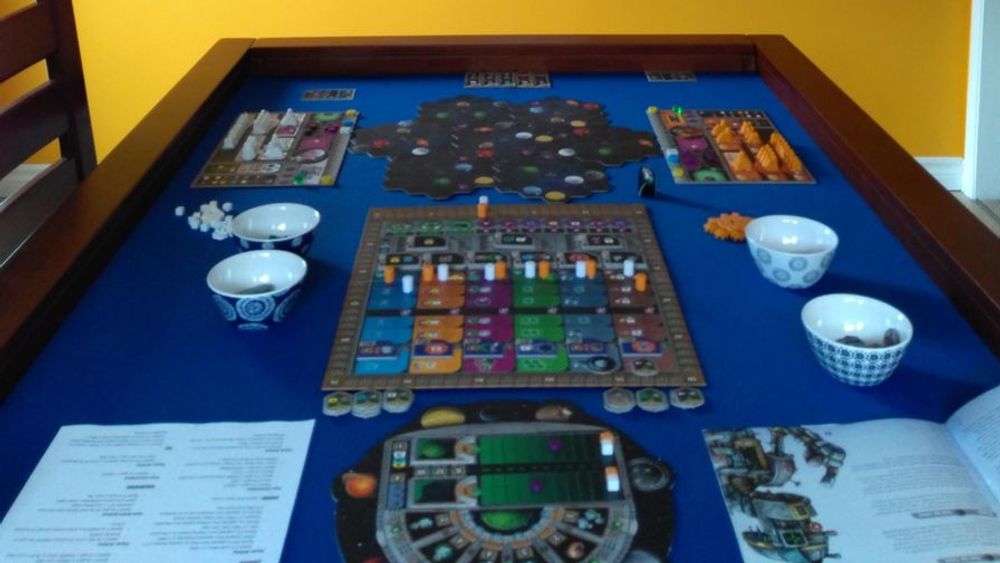
While multiplayer games thrive on social interaction and adaptability, solo play is a crucible for strategy and tactical depth. It’s in these quiet moments, when the room is silent except for the clatter of tokens and shuffle of cards, that Gaia Project transforms from a mere board game into a profound meditative practice. You’re not just playing against the Automa; you’re continually crossing swords with previous versions of yourself, always striving for perfection.
The Pros and Cons
Every game of Gaia Project is a symphony where complex mechanics harmonize to create an immersive experience. But even symphonies have their crescendos and diminuendos, moments of brilliance peppered with potential disconnects.
What Sets Gaia Project Apart
Gaia Project stands out as a stellar example of asymmetric design, where each faction wields unique abilities that bend the game’s mechanics in intriguing ways. It fosters an intense replayability factor – no two games feel the same. Whether it’s the diverse array of tech tracks or the modular board that brings about a fresh strategic landscape every time, Gaia Project has a richness that glues you to your seat and keeps the game on your table time and again.
Another merit is its perfect-information paradigm – the absence of randomness means every victory or defeat is born out of skill, not chance. I’ve seen players get hooked on this pure strategic environment, where every move carries weight and consequence. Plus, the Solo mode is a goldmine for when you wish to test out strategies in isolation or simply can’t gather a group.
The power cycle mechanism is also a work of art. Managing your power tokens to gain resources, use abilities, or control your growth is a fascinating challenge. Participating in this intricate dance of energy management, I have often been reminded of lessons in resource efficiency that have relevance even beyond the board.
Potential Drawbacks for Players
However, Gaia Project’s complexity can be a double-edged sword. New players can find the depth and breadth of the rules daunting, and it demands a substantial investment of time to scale the steep learning curve. Those who prefer straightforward or quick-play games may feel overwhelmed by the myriad strategies and paths to victory.
I can’t ignore the component quality – some gamers have voiced their disappointment, expecting pieces that match the grandeur of the game’s galaxy-spanning scope. It’s a valid point; the excitement of unfolding a new civilization can be somewhat dampened by less-than-stellar tokens and boards.
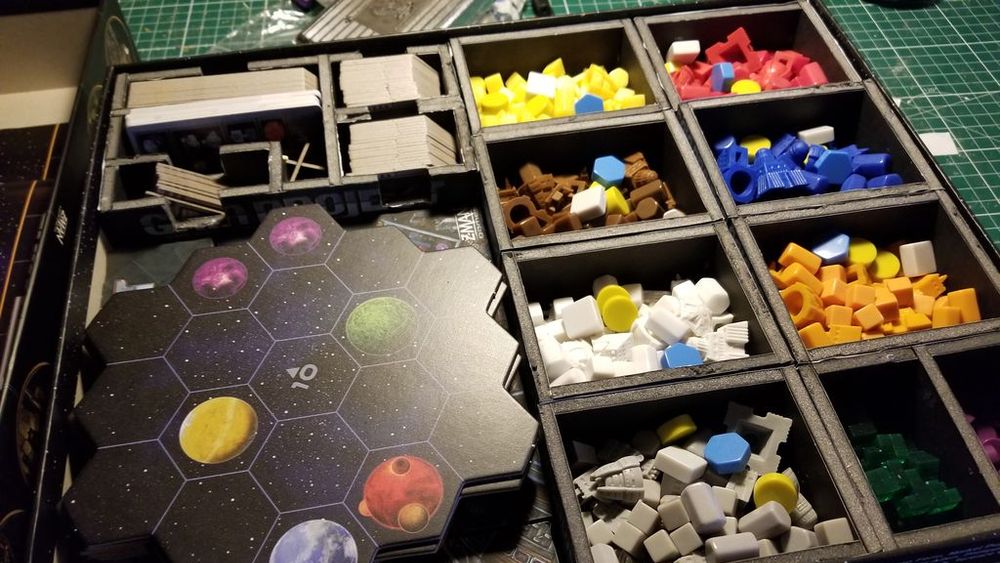
Lastly, because of its thinky nature, the gameplay can lead to lengthy sessions, particularly with more players. Those looking for a brisk, casual evening might find the duration a bit taxing. As someone who revels in these extensive strategic excursions, even I have to admit that sometimes the gameplay can outstay its welcome, especially when players are prone to analysis paralysis.
The complexity of Gaia Project can be overwhelming for new players and may lead to lengthy game sessions, but the component quality may also disappoint some gamers.
FAQs
1. How does Gaia Project compare to Terra Mystica?
Comparing Gaia Project to Terra Mystica, the former is seen as an evolution – retaining core mechanics while offering a varied board and more strategic choices, enhancing replayability and depth.
2. Is Gaia Project suitable for beginners?
Gaia Project can be suitable for beginners who are eager and willing to invest time into understanding its complex gameplay and myriad strategies, albeit the learning curve is steep.
3. Can Gaia Project be played solo effectively?
Gaia Project can indeed be played solo effectively, with its robust Automa system providing a complex and satisfying single-player experience.
4. What is the average playtime for a game of Gaia Project?
The average playtime for a game of Gaia Project is typically in the range of 60 to 150 minutes, fluctuating based on the number of players and their familiarity with the game.
Conclusion
In this Gaia Project review, I’ve endeavored to teleport you into the wondrous expanse of a game that captures the imagination and challenges the intellect. From the euphoria of mastering new strategies to the rich stories that emerge around the table, Gaia Project is a game that resonates with the ardent gamer in all of us.
Whether you’re a burgeoning spacefarer or a seasoned admiral of the stars, Gaia Project is a cosmic odyssey worth embarking upon. The satisfaction of building a galactic empire is reflected not only in every game session but also in the lingering desire to explore “just one more strategy” long after the pieces have been packed away.
Ultimately, Gaia Project is an odyssey that’s as enchanting as it is demanding, a game that can bring both novices and connoisseurs of strategy to the same table. Its breadth is its beauty; its challenge, its charm. It’s a universe I’ve fallen in love with, game by game – a sentiment echoed by many across the cosmos of tabletop gaming.
So raise your sails of starlight and chart a course for unclaimed worlds. Gaia Project beckons with its expansive embrace, promising epic tales and cerebral conquests. Until we cross orbits again in this vast playground of the intellect, I wish you many successful voyages through the stars. Happy gaming, my friend.
Lucas
More Boardgame Reviews:
This article uses material from BoardGameGeek and is licensed under the Creative Commons Attribution-Share Alike License.

